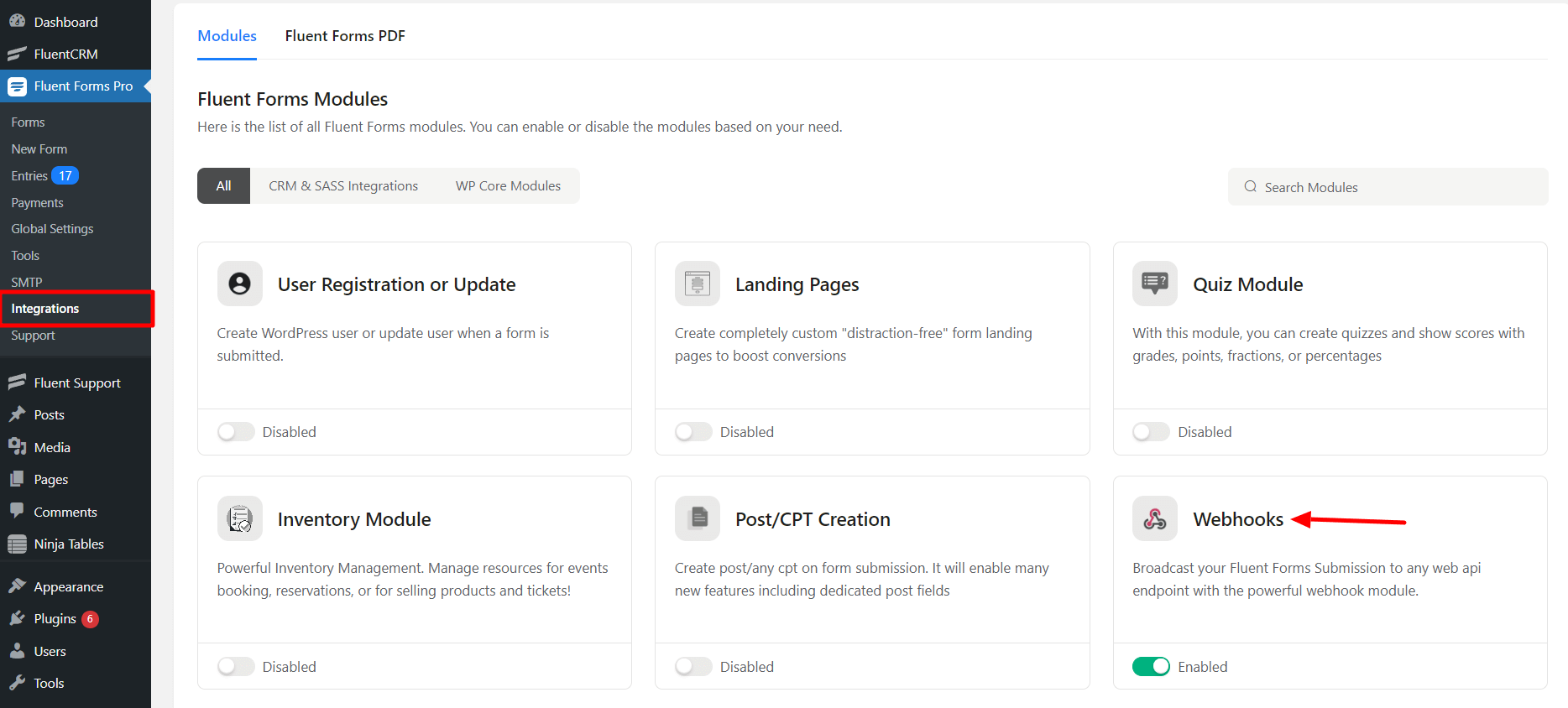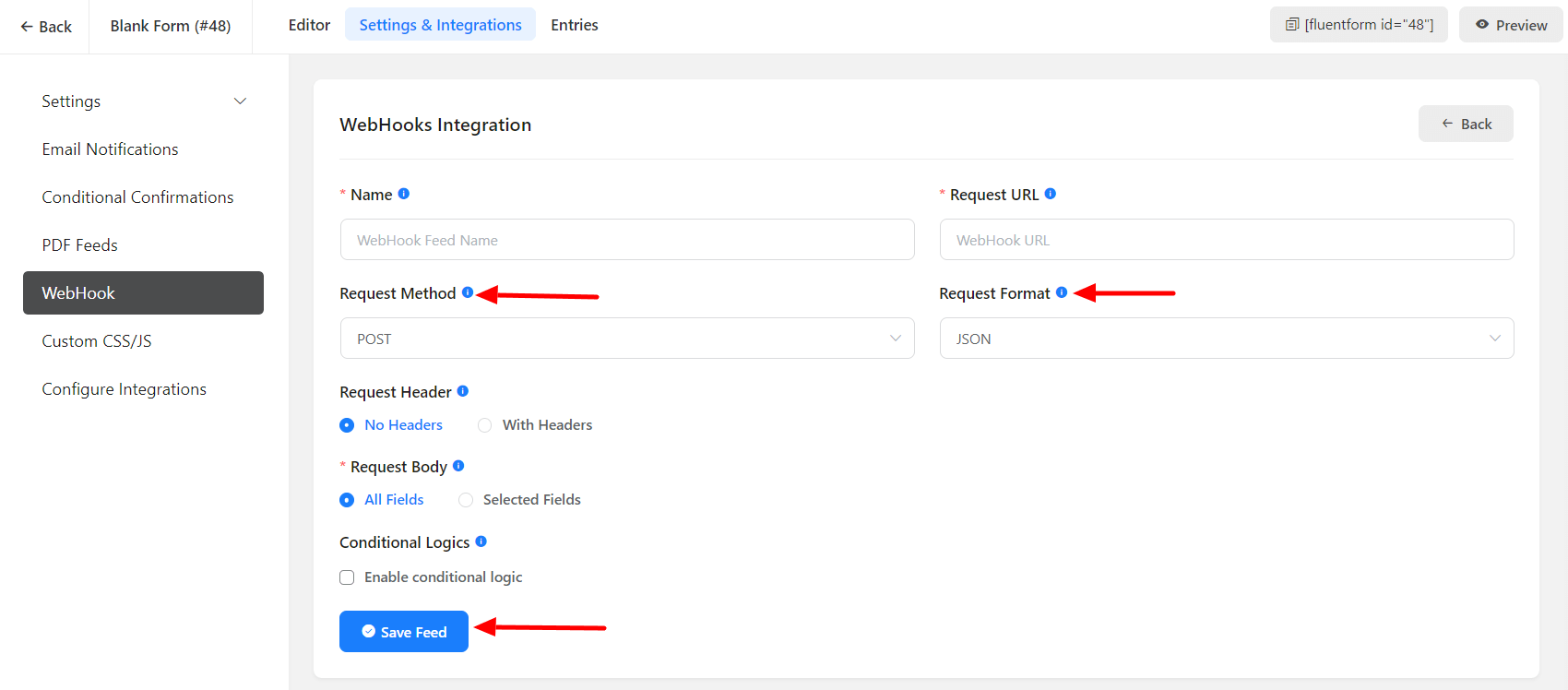Webhook Integration with Fluent Forms
Broadcast your Fluent Forms Submission to any web API endpoint with the powerful webhook module.
Integrate any Webhook with Fluent Forms Pro by following the steps mentioned below –
Steps to integrate Webhook with Fluent Forms
- Activate the Webhooks Module
- Create/Use a Form with Fluent Forms
- Create a new Webhook from the Form Settings
- Go to the Integration Modules from Fluent Forms (WordPress admin panel sidebar) and turn on the Webhooks Module, as shown in the screenshot below-

- Now, go to the settings of the particular form for the entries which you want to be listed in Webhooks. Click on Add New and select Webhooks Integration from the dropdown.

- Configure the Webhook.
- Name: Enter a feed name to identify this setup uniquely.
- Request URL: Enter the URL to be used in the Webhook request (The Webhook recipient provides the URL).
- Request Method: Select the HTTP method used for the webhook request. Choose from GET, POST, PUT, PATCH, or DELETE here.
- Request Format: Select the format for the webhook request. Select between FORM and JSON from the drop-down menu.
- Request Header: Select if any headers should be sent with the webhook request.
- Request Body: Select if all fields or select fields should be sent with the webhook request.
- Request Fields: If Selected Fields have opted into the previous option, this one will appear. Choose from the fields you want to be in the Request Body.
- Conditional Logic: Enable Conditional Logic if required. Learn more about Fluent Forms Conditional logic here.

- Click on Save Feed when the configuration is done.
